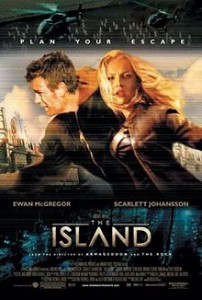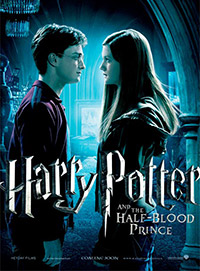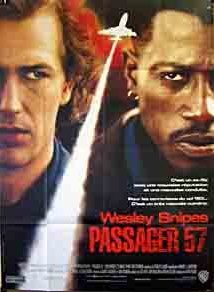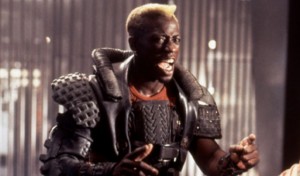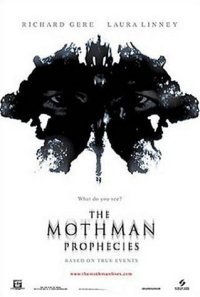
It’s not often in movies that we are presented with a truly alien force. In this case, when I say “alien” I mean more H.P. Lovecraft than Mr. Spock. It makes sense. We like to recognize the motivations of the characters we are watching onscreen. Writing characters no one can relate to is one of the basic no-nos of Writing 101. So perhaps it’s no surprise that when a film elects to do so anyway, it risks underperforming at the box office.
At 53% on Rotten Tomatoes and having earned just $32 million domestically (barely breaking even on its budget), The Mothman Prophecies is the very definition of an unremarkable film, critically and commercially speaking. But it’s an underrated gem in my opinion. While not perfect, there is one thing the film does fantastically well: present viewers with a truly alien entity while drenching every minute of screen time in unrelenting creepiness.
The film is loosely based on an urban legend. Mothman is a legend local to the Point Pleasant area of rural West Virginia. Described as a man-sized flying creature with glowing red eyes, it was sighted frequently in the Point Pleasant region from November 1966 to December 1967. It’s been variously described as an alien, a cryptid, or some sort of supernatural entity. Accounts of sightings vary, but many involve descriptions of precognitive visions of upcoming disasters, and this is where the movie devotes a great deal of its focus.
The film begins with domestic bliss quickly shattered. While driving home from purchasing their dream house in Washington, D.C., John Klein (Richard Gere) and his wife Mary (Debra Messing) are in a car accident. Mary catches a glimpse of a red-eyed something flying toward their car at high speed. She swerves to avoid this apparition and injures her head in the wreck.
Tragedy follows, yet it’s not Mary’s head injury which kills her; she wakes up concussed but otherwise unharmed. But her glimpse of the Mothman apparition has opened her mind in some way. She wakes certain something is deeply wrong inside her. An MRI reveals the truth, an aggressive brain tumor that has been growing for some time. A tumor the Kleins would never have discovered had it not been for the accident and the entity that caused it.
The remainder of the film documents John’s increasing obsession with these entities that foresaw his wife’s death and their seeming obsession with the town and people of Point Pleasant. A simple enough premise, in fact it’s arguably pretty thin on plot. What kept me gripped was the overridingly creepy tone and atmosphere. I’ve thought a lot about the film and its secret–and a good lesson for anyone trying to recreate the same sensation in their writing–is that it keeps the viewer constantly off balance. The viewer keeps desperately searching for some set of rules these creatures operate by, but the movie throws nothing but curve balls. It’s a dangerous technique, as it can give the impression that the writer is simply making up rules as he goes, but handled properly, it creates the impression that a mere mortal writer can conjure up something that is outside human comprehension. It’s an illusion, of course, but a potent one. Below are just some of the examples of this from the film.
John sets out to drive to Richmond, VA from Washington, D.C. only to arrive at Point Pleasant in the middle of the night. He has no recollection of how he got there, not to mention how he traveled an impossible distance in a mere three hours.
The entities speak to a friend of John’s from the drain of a sink. “In a place this size, equator, three hundred will die,” they prophesy. And they are correct.
A creature calling itself Indrid Cold calls John late one night and begins reciting facts about his life to him while John records its answers. “Did you read my mind?” John finally asks.
“I have no need to,” it responds. John later discovers that this was no true voice, but some kind of electrical impulse operating outside the range of human vocal cords.
And at a bar one day, a nicely printed business card is delivered to John. It reads:
Georgetown.
Friday.
Noon.
Mary will call.
At this point in the movie, Mary has been dead for two years. Yet we the viewers have seen Mary, or something that looks like Mary, stalking John from the edges of the frame, even though John himself has not. And in Georgetown, on Friday, at noon, John’s phone begins to ring…
If you love being creeped out by a story as much as I do, this stuff is gold. The film depicts John’s downward spiral into obsession with chilling verisimilitude. Desperate for answers, he eventually tracks down another “survivor” of these creatures, Dr. Alexander Leek (Alan Bates). But the entities are so alien that Dr. Leek has little in the way of explanation. John is forced to confront the notion that his questions may have no answers, at least none that he can comprehend.
“I think we can assume that these entities are more advanced than us. Why don’t they just come right out and tell us what’s on their minds?” John asks.
“You’re more advanced than a cockroach,” Leek replies. “Have you ever tried explaining yourself to one of them?”
Of course, what John really wants to know is: why him? Dr. Leek’s answer is my favorite line of the movie. “You noticed them. And they noticed that you noticed them.” Gives me chills every time.
The Take Home: When things start making sense, they stop being scary. A lack of answers is unsatisfying to us by its very nature, but handled properly, it can create the illusion of a mystery that’s beyond our comprehension. It’s a chilling tool to include in your writing toolbox.

